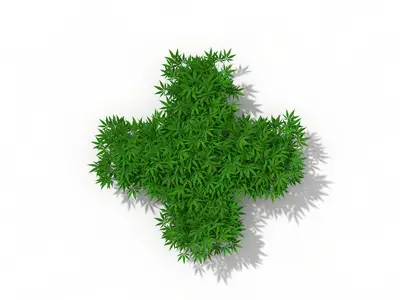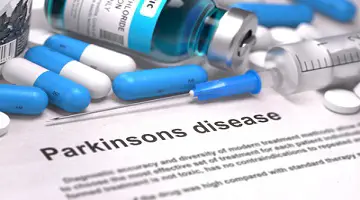“Does medical marijuana really help with Parkinson’s disease?” This is a question that thousands of people who suffer from Parkinson’s are asking themselves.
Parkinson’s is a neurodegenerative disorder that ultimately impairs a person’s ability to function and live a normal life. Muhammad Ali , the beloved boxer, is probably one of the most famous people to ever get Parkinson’s disease. Surely lots of you remember the suffering he experienced from tremors and rigidity.
New advances in the treatment of Parkinson’s are being developed every single day. Unfortunately, neurodegenerative diseases such as Parkinson’s are almost impossible to cure completely.
We have treatments to help those with Parkinson’s lead normal lives. However, we don’t have a definitive treatment to end the disease completely or reverse the damage it has caused to the body.
What is Parkinson’s Disease?
In order for the brain to regulate and control our movements, there has to be a balance between two neurotransmitters: dopamine and acetylcholine.
What happens in Parkinson’s is that dopamine is severely depleted. This, in short, is the mechanism through which the symptoms and signs of Parkinson’s happen.
Hand tremors, lack of coordination and sense of position, shuffling gait, fixed facial expressions, voice tremors, sleep disturbances, and altered handwriting are just some of the manifestations of the illness.
There are others that are less common like mood changes, constipation, difficulty chewing, urinary problems, and skin problems.
As you can see, the manifestations of Parkinson’s are plenty; and as expected, all of these can impair a person’s activities of daily living. Low dopamine, and maybe even low norepinephrine, are the primary culprits that lead to these symptoms.
What causes Parkinson’s isn’t entirely clear. Some suggest that repeated head trauma is a major risk factor, which is why many boxers commonly get the disease. Others say that genetics and autoimmune diseases play a role in the disease’s development.
Current Western Treatment

1. Since we know that low dopamine is what causes Parkinson’s, Western treatment tries to elevate dopamine levels in the brain through several mechanisms.
The most common of these mechanisms is the administration of a combination of carbidopa and levodopa (carbidopa-levodopa) to the body, which is artificial dopamine.
- The carbidopa part of the drug replaces the low dopamine in a person’s brain.
- The levodopa part is added to ensure that the carbidopa isn’t broken down before it enters the brain.
- If we were to give carbidopa without levodopa, it would all be broken down before the body received any benefit.
Dopamine agonists don’t change dopamine levels. They just work by stimulating the same receptors. These include drugs like pramipexole, ropinirole, and rotigotine.
Carbidopa-levodopa and dopamine agonists display most of the same side effects. These side effects include nausea, dizziness, hallucinations, and compulsivity. It’s also noteworthy to mention that taking these drugs over a long period of time could change the effects they have at different doses.
2. MAO B and COMT inhibitors are two more classes of drugs that can be used to treat Parkinson’s, although carbidopa-levodopa remains the most commonly used.
MAO B and COMT are enzymes that break down dopamine in the brain. By inhibiting them, you’ll be reducing the breakdown of dopamine and ultimately increasing dopamine levels.
Side effects of MAO B inhibitors include nausea and insomnia. Side effects of COMT inhibitors include diarrhea and an increased risk of involuntary movements.
Parkinson’s drugs are effective and improve the lives of hundreds of thousands of people. However, almost all of these drugs have undesirable side effects.
3. Finally, we have anti-cholinergic and amantadine drugs. These aren’t as effective as the classes of drugs mentioned above. But they can be used in the early stages of the disease and can be added on in combination therapy.
In addition to drugs, deep brain stimulation (DBS) offers a surgical option. Regardless of what treatment is used, healthy eating, exercise, and avoiding falls are recommended for all patients suffering from Parkinson’s.
Medical Marijuana and Natural Holistic Treatment for Parkinson’s

Medical marijuana has recently emerged as a potential option for the treatment of Parkinson’s. It’s not officially approved by any institute or the FDA, but many Parkinson’s patients report positive effects from the use of marijuana.
1. Marijuana works by stimulating two types of receptors: CB1 and CB2. Its positive effects in Parkinson’s disease patients are thought to be related to its ability to stimulate CB1 receptors in the brain.
2. Some studies have been conducted to test the value of using marijuana to treat Parkinson’s.
To-date, the results have been promising. One study had 10 Parkinson’s patients take marijuana, monitoring the effects. Of the 10 patients, 3 didn’t complete the study due to allergic reactions and abdominal pain.
The 7 that did complete the study, however, showed improvement in their Parkinson’s symptoms compared to before receiving the marijuana. The 7 patients also said to they felt less irritable.
3. Two subsequent studies were conducted that showed that marijuana did not alleviate motor symptoms like rigidity, stiffness and shuffling gait. However, the studies did show that marijuana helped with the mood changes, sleep disturbances, and reduced tics.
4. Through the studies that have been performed so far, it seems like the effects of medical marijuana aren’t directly because they treat Parkinson’s, but because they help make patients less anxious and help them sleep.
Perhaps this means that marijuana can be combined with drugs like carbidopa-levodopa for a better impact on the health of patients rather than expect it to be used as a standalone treatment.
Optimum Marijuana Strain for Parkinson’s Disease
1. Since we’re trying to alleviate anxiety and stress, the optimum marijuana strain for Parkinson’s disease is Indica. This is because Indica strains help patients relax and get more sleep.
Sativa is more of a stimulant and has been reported to cause anxiety in some people. This is definitely not what we want for patients suffering from a neurodegenerative disease.
Medical marijuana isn’t approved as a treatment for Parkinson’s yet. While studies have shown promising results in terms of reducing stress, anxiety, and sleep disturbances, lots of research still has to be done.
Why? Well, because the studies that have been conducted so far haven’t been optimal. Performing a study with only 10 patients for example doesn’t make the study reliable enough.
2. If you wish to try medical marijuana for your Parkinson’s symptoms, then we recommend that you first consult your doctor. Your doctor will also be able to help you with the level dosing and tell you whether or not marijuana is suitable in your case.
So far there’s been no one clear way of taking marijuana that makes it more effective for Parkinson’s than others. However, one recent study indicates that inhalation is an effective method.
3. Medical marijuana can be purchased at dispensaries if it’s legal in your state.
If you live in Canada, then you have the luxury of using online dispensaries, something that those living south of the border don’t have in most states.
If you do live south of the boarder in a state where marijuana is still illegal, you still can purchase CBD oil online. But you must make sure you are buying from a reliable website that has trusted CBD oil with lab reports showing the CBD and THC levels.
4. Other holistic therapies for Parkinson’s are yoga, tai chi, and meditation. Tai chi improves flexibility, balance and muscle power. Working on these will help patients move more freely and at the same time lower the risk of falling. Yoga similarly relies on stretching and improving balance while meditation helps lower stress and anxiety.
Summary
So does medical marijuana really help with Parkinson’s? According to the studies so far the answer is yes. Medical marijuana helps reduce anxiety and stress while helping patients sleep better thereby improving patients’ quality of life. Nonetheless, medical marijuana has not yet been proven to cure or reverse the disease itself. We’ll learn more over the next few years as more studies are conducted.
Thank you for reading “Does Medical Marijuana Really Help with Parkinson’s Disease?”
We would love to hear about your experiences using medical marijuana and/or CBD oils for Parkinson’s disease. Please give your comment below.
We believe others who are trying to find a natural treatment for their Parkinson’s disease disorders will definitely appreciate and benefit from your comments.
Lear more here:
https://www.medicalnewstoday.com/articles/323396.php
https://www.mayoclinic.org/diseases-conditions/parkinsons-disease/diagnosis-treatment/drc-20376062
https://parkinson.org/Understanding-Parkinsons/Treatment/Medical-Marijuana
https://www.ncbi.nlm.nih.gov/pmc/articles/PMC4357541/


